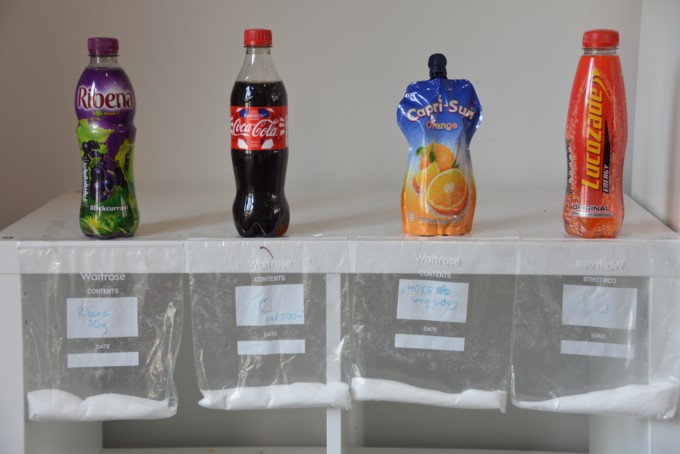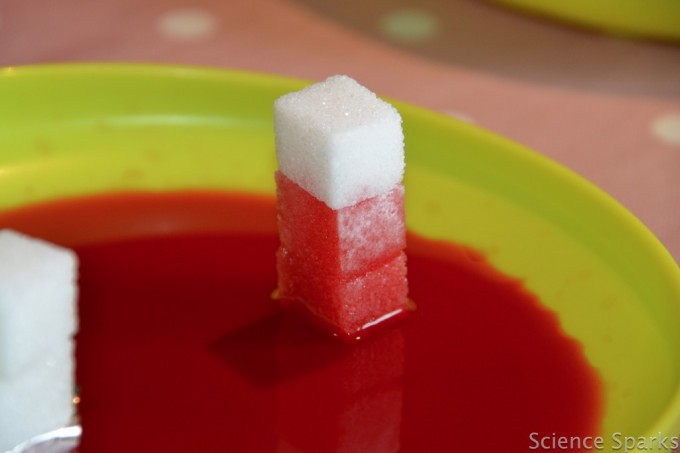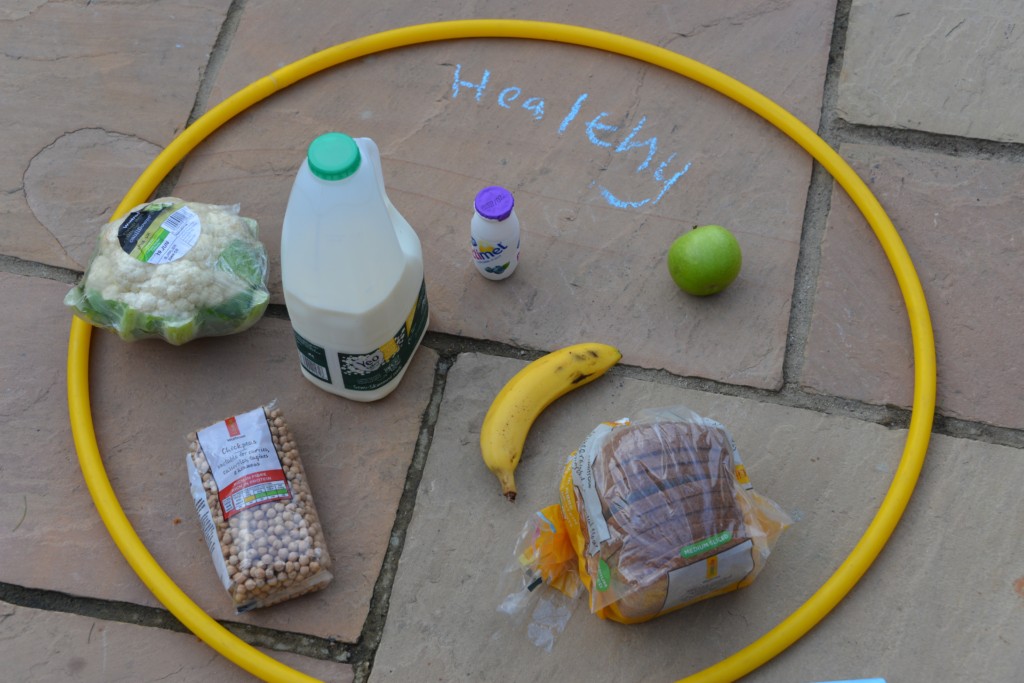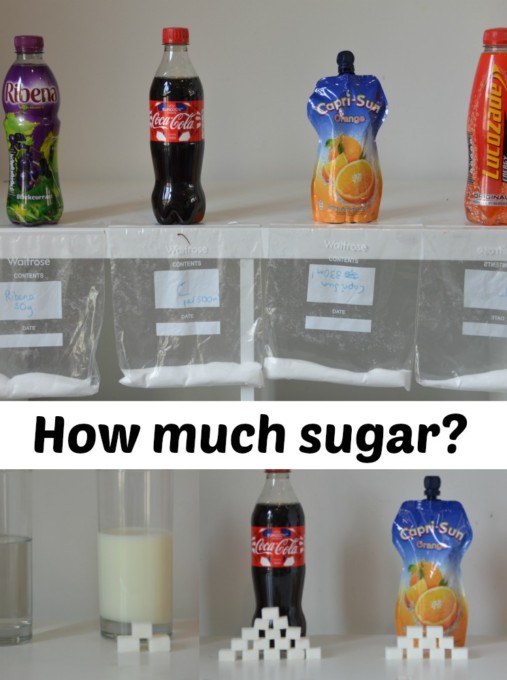Do you know how much sugar is in kid's drinks? We set up an investigation to find out how the amount of sugar differs between common drinks.
We decided to calculate the amount of sugar in the full bottle or container rather than for the same amount of the drink as most people would drink a whole bottle, but as an alternative, you could calculate the amount of sugar per 100ml or 200ml of each drink.
How much sugar is in children's drinks?
We chose drinks that were not low sugar varieties, but comparing the two would also be an interesting investigation.
Note that this activity was completed in 2016, so the amount of sugar in each could have changed.
Instructions
- Use the information on the side of the bottle to calculate how much sugar the drink contains.
- Weigh that amount of sugar.
- Compare the sugar found in different drinks.

Stacking the sugar cubes up gives a better representation.
How much sugar is in Lucozade?
4.6g sugar per 100ml.

How much sugar is in Ribena?
The bottle we tested contained 4.6g per 100ml.
How much sugar is in Coke?
10.6 g per 100ml, this is about seven teaspoons of sugar.

Can you turn this into a game and ask a friend to match the sugar to the drinks?
Are you surprised by how much sugar these common drinks contain?
Extension Tasks
Calculate how many cups of sugar you would need to drink to consume the same amount of sugar as one bottle of Ribena. We used this great balance from Learning Resources.

Can you make your own balance? We used this great K'nex levers and pulleys kit, as a fun alternative.

Links to Maths
Measurement - Compare, describe and solve practical problems for mass/weight
- Measure and begin to record mass/weight
Does any drink contain ½ as much sugar as another?
More science experiments using sugar
Find out how sugar cubes absorb water in this colourful investigation.

Find out what you can do to help keep your teeth healthy with a science activity using eggs to represent teeth.
Investigate whether sugar dissolves in water, then try to dissolve sugar in oil, warm and cold water and compare the results.
Try some food sorting using hula hoops. Place healthy foods in one hula hoop and less healthy foods in another hoop. Hula hoops can also be used to make a Venn diagram.

Suitable for Key Stage 1 Science
Animals and Humans
Describe the importance for humans of exercise, eating the right amounts of different types of food, and hygiene.

Contains affiliate links
Last Updated on June 13, 2024 by Emma Vanstone




Leave a Reply